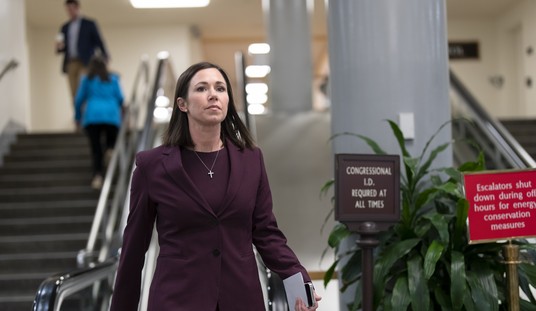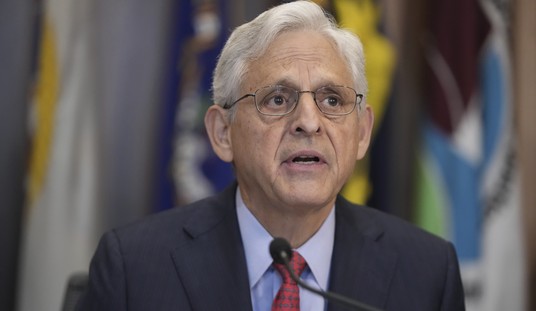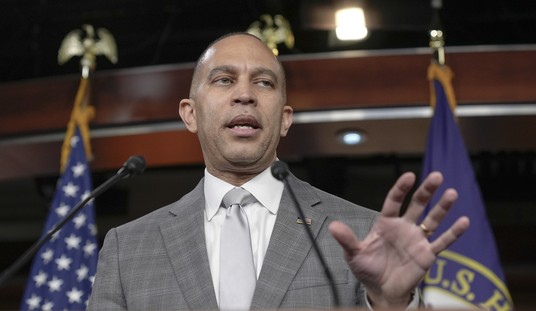
In this photo released by Xinhua News Agency, from behind left, U.S. Commerce Secretary Wilbur Ross, Chinese Vice Premier Wang Yang and China’s Commerce Minister Zhong Shan applaud as they witness officials exchange memorandum of understanding during a signing ceremony in Beijing, Wednesday, Nov. 8, 2017. U.S. and Chinese companies on Wednesday signed business deals the two sides valued at $9 billion during a visit by President Donald Trump in a tradition aimed at blunting criticism of Beijing’s trade practices. (Rao Aimin/Xinhua via AP)
Yesterday, the South Korean government announced that it had negotiated its way out of a potential trade war with the United States.
President Trump is on the verge of securing his first major trade deal, leveraging the threat of tariffs to gain concessions from South Korea on exports of steel and imports of American cars.
…
The reduction of trade deficits have been a priority for the United States; in 2016, it had a $17 billion trade deficit with South Korea.In a statement published on Monday, the South Korean Trade Ministry said it had agreed to adhere to a quota of 2.68 million tons of steel exports to the United States a year, which it said was roughly equivalent to 70 percent of its annual average sent to the United States from 2015 to 2017. It also agreed to lower trade barriers to vehicles imported from the United States. Trump administration officials cited what they considered unfair barriers against American-made cars when they began last year to pressure South Korea to amend the trade pact.
In return, the Trade Ministry said, South Korea would be exempt from the steel tariffs.
Under the deal, the number of vehicles the United States can export to South Korea without meeting local safety requirements would double to 50,000.
According to some experts, bringing the hammer down on Communist China’s longstanding predatory practices, particularly in regards to intellectual property, also has a very good chance of working. China expert, Gordon Chang, writing in the Daily Beast has this analysis:
Experts, believing China holds more leverage, ignore important realities. First, that country is growing more dependent on access to the American market. In 2016, a stunning 68.0 percent of China’s overall merchandise trade surplus related to sales to the U.S. In 2017, that figure increased to 88.8 percent. Trade-surplus countries, as history shows, generally suffer more in trade wars.
Beijing, therefore, is generally vulnerable to being pushed around by Washington. “If trade is so unimportant to China, why has China’s trade predation lasted so long and taken so many different forms?” Alan Tonelson, an independent Washington, D.C.-based trade analyst, asked, in comments to The Daily Beast over the weekend.
Second, the American economy is far bigger than the Chinese one. Beijing claimed gross domestic product of $12.84 trillion in 2017. America’s economy, by way of contrast, clocked in at $19.39 trillion last year.
China’s GDP numbers are surely overstated because, especially during the last two years, the country’s growth was less than half that reported by the official National Bureau of Statistics. America’s larger economy is, at the moment, in fact growing at a faster clip than China’s.
It should go without saying that big economies push smaller ones around, especially when the gap is this large.
Third, the American economy, for all its faults, is stable, and China’s, by most accounts, is on the verge of a debt crisis. China’s debt-to-GDP ratio looks like it is somewhere, depending on the amount of so-called hidden debt, between 350 percent and 400 percent.
Chinese concern about the state of the economy led to extraordinary capital flight in 2015 and 2016, with net capital outflow probably reaching $2.1 trillion in the two-year period. Only the imposition of draconian capital-control measures beginning in the fall of 2016 stopped the outbound torrent of capital.
In this regard, Beijing has been, on balance, selling American Treasury obligations since the middle of 2014 in order to defend its currency, the renminbi, and this has not caused any noticeable effect on the ability of the U.S. to finance deficits. China’s Cui can threaten selling greenbacks in response to Trump’s tariffs as he did last week, but his government either has to dump dollars or clamp down even harder on money flows. Clamping down can only work in the short term, so dollar sales will eventually occur, whatever Trump does or does not do on trade.
He has some other interesting points. China needs somewhere to park its foreign exchange and investments in the U. S. and in U. S. securities is the only sump deep enough to serve that purpose. Any drop in U. S. imports from China will be made up in short order by imports from other low-wage nations. Curtailment of Chinese purchases of U. S. agricultural products will be only a minor disruption as China has to buy those products from somewhere, and them doing so opens new markets to the U. S.
For decades, Chinese leaders have staked their legitimacy primarily on the continual delivery of prosperity. Trump not only threatens the Chinese economy but also the Communist Party’s political system. That gives China’s leaders great incentive to hold back retaliatory moves.
…
In short, Trump holds the high cards when it comes to China, and, unlike his predecessors, he knows it.
And because of that, the overwhelming odds are that China will find a way to avoid a series of tit-for-tat retaliatory actions that are going to hurt China’s rulers much more than they are going to hurt America.
What is more, it seems like other people are thinking the same thing. Today, President Trump talked with German Chancellor Angela Merkle. This was one of the subjects:
The President and the Chancellor discussed joining forces to counter China’s unfair economic practices and illegal acquisition of intellectual property.
I completely understand the idea behind free trade. I’m totally for it so long as that trade is reciprocal in nature. What is not free trade is using state subsidies to allow the dumping of product, the shaking down of American companies for their IP as a condition to market access, currency manipulation, and restricted domestic markets. It’s like the old joke about the difference between theory and reality. In theory, it might look like we have free trade with a lot of countries. In reality, we’re being screwed by them. And it is easy to pull out your Milton Friedman and make academic arguments, right up until the time when your job is lost to unfair trade.













Join the conversation as a VIP Member